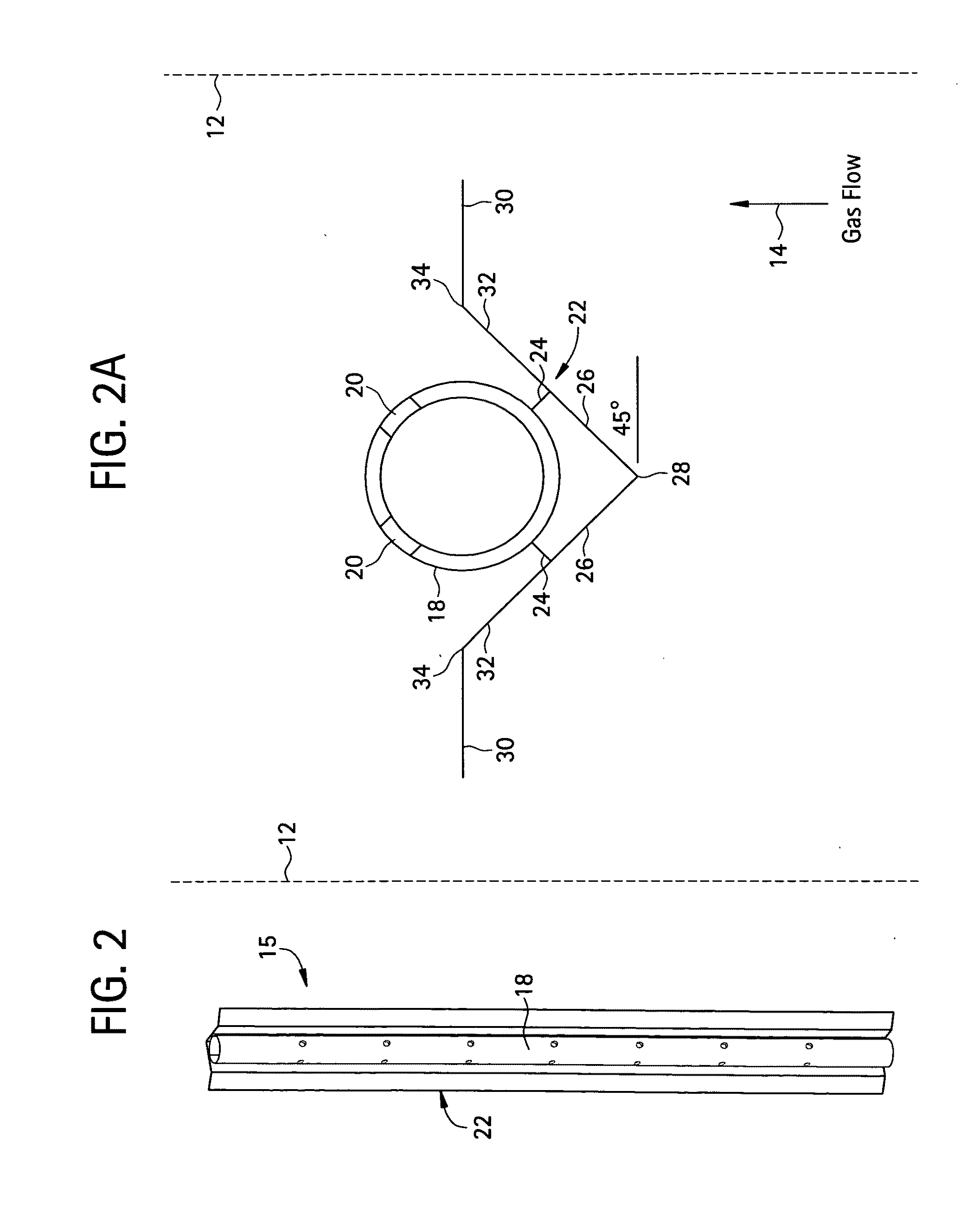Dispersion lance and shield for dispersing a treating agent into a fluid stream
a technology of dispersion lance and shield, which is applied in the direction of transportation and packaging, other chemical processes, separation processes, etc., can solve the problem that the overall distribution of the surface area of the injected treating agent (such as the exemplary sorbent) is not markedly uniform along the length of the lance, so as to improve the overall distribution of the injected medium, improve the overall distribution of the surface area, and improve the utilization of the injected sorbent
- Summary
- Abstract
- Description
- Claims
- Application Information
AI Technical Summary
Benefits of technology
Problems solved by technology
Method used
Image
Examples
Embodiment Construction
[0030]In FIGS. 1 and 1A schematic transverse and plan sectional views of a typical prior art dispersion lance 10, which is positioned in a duct 12 carrying a gas stream flow 14 which is being treated with a particulate ejected from the lance. The position of the lance within duct 12 is not shown to scale; rather the duct 12 and its actual wall spacing from lance 10 is merely intended to be suggested by the dotted lines used here—and as well in FIG. 2A. Also while dimensions and certain angles are shown in FIGS. 1, 1A, 2 and 2A, these are cited for illustration only and are not in any way intended to be limiting of the invention. The lance 10 comprises a pipe 8 which is mounted in duct 12 by means not shown. Pipe 8 has two parallel lines of openings 16 along its length. As seen in FIG. 1A the parallel lines of openings 16 are at the downstream facing side of pipe 8, and are oriented so that axial openings in opposed lines are at an angle of about 90° with respect to each other. The p...
PUM
| Property | Measurement | Unit |
|---|---|---|
| Fraction | aaaaa | aaaaa |
| Fraction | aaaaa | aaaaa |
| Length | aaaaa | aaaaa |
Abstract
Description
Claims
Application Information
 Login to View More
Login to View More - R&D
- Intellectual Property
- Life Sciences
- Materials
- Tech Scout
- Unparalleled Data Quality
- Higher Quality Content
- 60% Fewer Hallucinations
Browse by: Latest US Patents, China's latest patents, Technical Efficacy Thesaurus, Application Domain, Technology Topic, Popular Technical Reports.
© 2025 PatSnap. All rights reserved.Legal|Privacy policy|Modern Slavery Act Transparency Statement|Sitemap|About US| Contact US: help@patsnap.com



